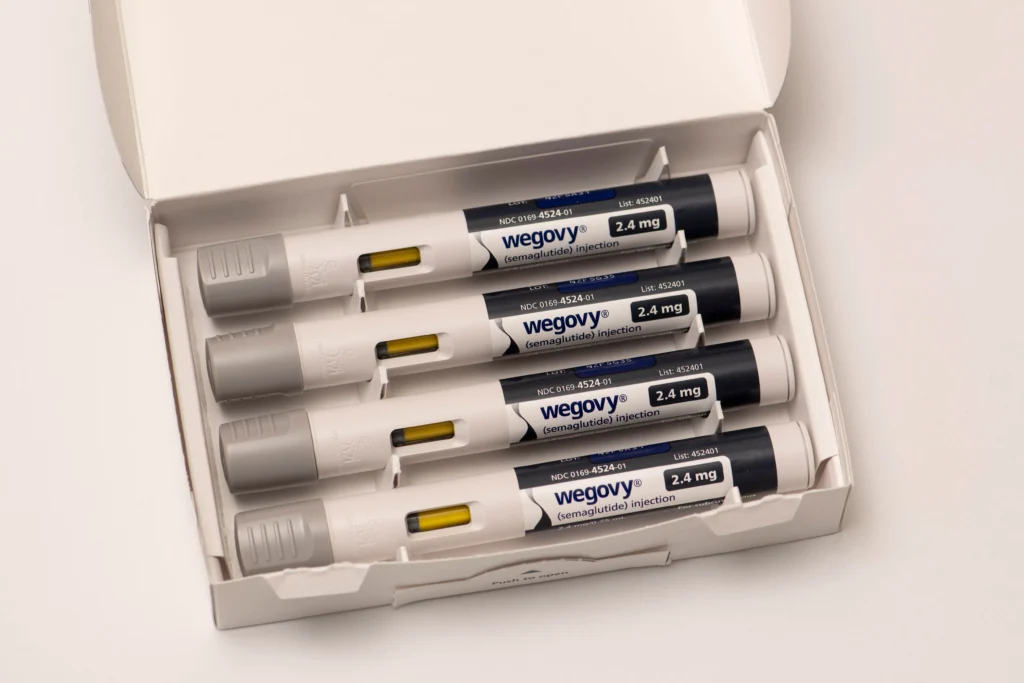Obesity affects millions of people worldwide, causing various health complications and reducing quality of life. Many individuals struggle with traditional weight loss methods like diet and exercise alone. Recently, specific FDA-approved injectable medications have shown promising results for obesity treatment.
GLP-1 receptor agonist medications such as Ozempic and Wegovy are effective in promoting weight loss. semaglutide (Wegovy) and tirzepatide (Mounjaro) are currently considered the most effective injections for obesity, with clinical trials showing weight loss of 15-20% of total body weight over time. These medications work by regulating appetite, slowing stomach emptying, and improving insulin sensitivity, helping patients lose weight and feel fuller longer while reducing overall caloric intake.
Weight loss injections represent just one component of a comprehensive obesity management The plan should include lifestyle modifications to help you lose weight effectively. Healthcare providers typically recommend these treatments for individuals with BMI ≥30, or BMI ≥27 with weight-related comorbidities, after thorough evaluation of medical history and potential contraindications.
Understanding Weight Loss Injections
Weight loss injections represent a significant advancement in obesity treatment, offering medical interventions for individuals who haven’t achieved success with diet and exercise alone. These medications work through specific biological pathways to reduce appetite and food intake.
Mechanisms of Action
Weight loss injections primarily function by mimicking natural hormones in the body that regulate hunger and satiety, helping people lose excess weight. GLP-1 receptor agonists like semaglutide (Wegovy, Ozempic) and liraglutide slow gastric emptying, making patients feel full longer. They also work in the brain to reduce appetite signals.
Semaglutide acts by binding to GLP-1 receptors, which helps regulate blood sugar and decreases hunger sensations. Tirzepatide (Mounjaro) offers a dual approach by activating both GLP-1 and GIP receptors, potentially providing enhanced weight loss effects.
These medications influence several physiological processes:
- Delayed stomach emptying
- Reduced appetite signals in the brain
- Improved insulin sensitivity
- Lower food cravings
Efficacy and Outcomes
Clinical trials have demonstrated significant weight loss results with these new weight loss drugs. Participants using Wegovy (semaglutide) lost approximately 15-20% of their body weight over 68 weeks, substantially more than with diet and exercise alone.
Mounjaro (tirzepatide) has shown even more promising results in some studies, with participants losing up to 22.5% of their initial weight. Saxenda (liraglutide) typically produces more modest results of 5-10% weight loss.
These medications are FDA-approved for chronic weight management in adults with:
- BMI ≥30 (obesity), or excess weight, is a key indicator for considering weight loss medications.
- BMI ≥27 with at least one weight-related condition Conditions like hypertension or type 2 diabetes may be exacerbated by weight gain, making weight loss important.
Long-term maintenance requires continued use, as most patients regain weight after discontinuation. The most effective outcomes occur when injections are combined with lifestyle modifications including healthier eating patterns and regular physical activity.
Comparing Popular Weight Loss Injections
Weight loss injections like Ozempic and Wegovy have revolutionized obesity treatment, offering significant results for those who haven’t responded to traditional methods to lose weight. These medications target specific hormonal pathways to reduce appetite and improve metabolic function.
Wegovy Vs. Ozempic
Wegovy and Ozempic both contain semaglutide, a GLP-1 receptor agonist that mimics hormones that regulate appetite and food intake, making them popular weight loss drugs. While chemically identical, they differ in their FDA-approved uses and dosing protocols.
Wegovy is specifically approved for chronic weight management in individuals with obesity or excess weight. weight management in adults with obesity (BMI ≥30) or overweight (BMI ≥27) with at least one weight-related condition. The highest dose reaches 2.4mg weekly.
Ozempic, primarily approved for type 2 diabetes management, is prescribed off-label for weight loss at lower doses (typically maxing at 1mg weekly). Clinical trials show Wegovy patients lose approximately 15% of body weight versus 10% with Ozempic’s lower dosing.
Both medications require lifestyle modifications for optimal results. Common side effects of weight loss drugs include:
- Nausea and vomiting
- Diarrhea
- Constipation
- Abdominal pain
Emerging Alternatives
Mounjaro (tirzepatide) represents the newest advancement in weight loss medications, targeting both GLP-1 and GIP receptors. Clinical studies demonstrate impressive results, with average weight loss of 20-25% of total body weight in many participants.
This dual-action mechanism potentially offers superior weight reduction compared to semaglutide-only options. Mounjaro received FDA approval for diabetes in 2022, with weight management approval pending.
Several other injectable options are in development pipelines. CagriSema combines semaglutide with another hormone-mimicking compound for enhanced effectiveness.
Patients considering weight loss injections should consult healthcare professionals who specialize in weight management. Prescription requirements include comprehensive health assessments and ongoing monitoring.
Insurance coverage varies significantly between plans, with out-of-pocket costs for weight loss drugs ranging from $25 to $1,300 monthly without coverage.
Practical Considerations for Treatment
When considering obesity injections, patients must understand these medications work most effectively as part of a comprehensive treatment approach that addresses multiple aspects of health management.
Diet and Exercise Integration
Obesity injections are not standalone solutions but work synergistically with lifestyle modifications. Patients must maintain a calorie-controlled diet even while on injectable medications. Most clinical trials showing significant weight reduction included dietary counseling alongside medication.
Physical activity remains essential, with experts recommending 150-300 minutes of moderate exercise weekly. Injectable treatments may help patients adhere to these lifestyle changes by reducing hunger sensations and food cravings, ultimately leading to weight loss.
Healthcare providers typically monitor blood sugar levels regularly, especially in patients with type 2 diabetes. This monitoring ensures the medication’s effectiveness while preventing potential complications related to excess weight.
Patients should document their food intake and exercise patterns to help clinicians make necessary adjustments to treatment plans.
Managing Side Effects
Common side effects include nausea, vomiting, and injection site reactions. These symptoms typically diminish within the first few weeks of treatment.
Patients can manage nausea by eating smaller, more frequent meals and avoiding foods high in fat. Staying well-hydrated also helps minimize digestive discomfort.
Proper injection technique reduces site reactions. Rotating injection sites between the abdomen, thigh, and upper arm prevents tissue damage and improves absorption.
Some patients may need to stop taking medications like Wegovy temporarily if severe side effects occur. Always consult with healthcare providers before discontinuing any prescribed treatment.
Gradual dose escalation, as directed by healthcare providers, often helps minimize adverse effects while maintaining treatment effectiveness.
Frequently Asked Questions
Weight loss injections have become increasingly popular treatment options for obesity. Below are answers to common questions regarding these medications, their effects, and practical considerations.
What are the most effective weight loss injections currently available?
Semaglutide (Wegovy) and tirzepatide (Mounjaro) are considered the most effective weight loss injections based on clinical trials showing 15-20% average body weight reduction.
How do different weight loss injections compare in terms of efficacy?
Tirzepatide generally shows superior results (up to 22.5% weight loss) compared to semaglutide (up to 15%), while liraglutide (Saxenda) typically yields 5-10% weight loss in most patients.
What are the common side effects associated with the top weight loss injections?
Gastrointestinal issues like nausea, vomiting, diarrhea, and constipation are most common, usually diminishing after several weeks as the body adjusts to the medication.
Are there any weight loss injections that can be safely administered at home?
Yes, most GLP-1 medications including Wegovy, Saxenda, and Ozempic come in pen-style injectors specifically designed for safe self-administration after proper medical instruction to help you lose weight.
What is the cost range for the leading weight loss injections?
Without insurance, monthly costs range from $900-$1,500 for Wegovy or Saxenda, while Mounjaro can cost $1,000-$1,300, with potential savings through manufacturer programs or insurance coverage.







